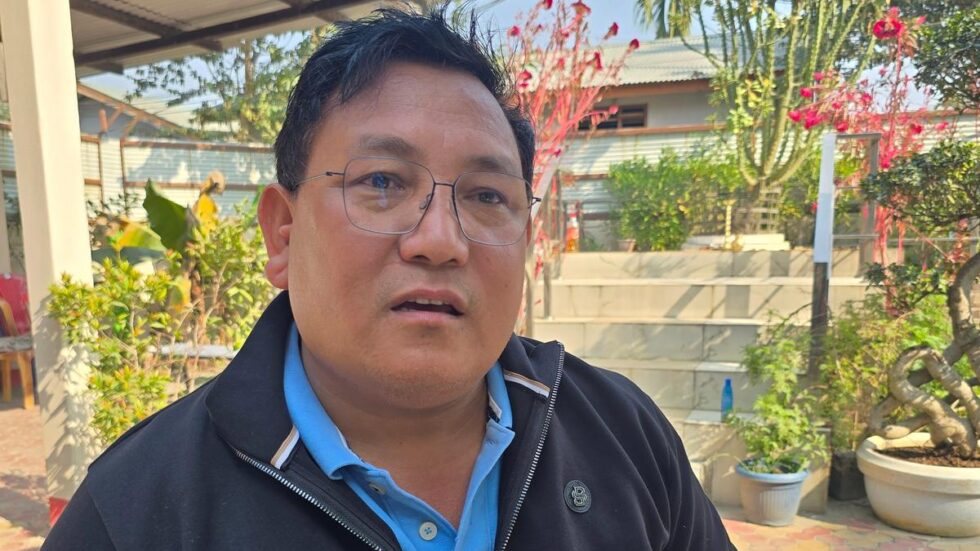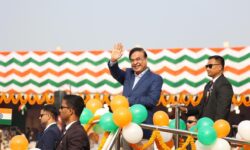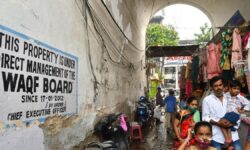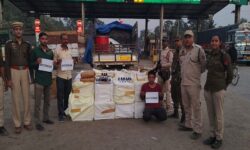
GUWAHATI
The Odias are too few to be a political force in Assam’s Bodoland Territorial Region (BTR). Ditto with the Hajongs, Kurukhs, Madahi Kacharis or Scheduled Caste sub-groups such as the Hiras and Patnis.
These ethnic groups were among 26 – the numerically larger Adivasis, Gurkhas, Koch-Rajbongshis and Muslims included – that shared space in a community-based vision document released by Assam Governor Lakshman Prasad Acharya on Monday (December 30, 2024).
Assam: For BJP ally, bye-election win a boost for 2025 Bodoland Territorial Council elections
Pramod Boro, the chief executive member of the Bodoland Territorial Council (BTC), said the first-of-its-kind vision document was a New Year gift for these communities to acknowledge their role in helping maintain peace across BTR during his tenure since 2020. The areas under BTR have had a history of ethnic and communal conflicts.
The BTC administers the 8,970 sqkm BTR comprising five districts inhabited by 31.55 lakh people, including the Bodos, the single-largest Scheduled Tribe in Assam.
“This vision document is one of my dream projects and a gift from the BTC for the 26 communities, most of whom did not get the kind of attention they deserved from the government as citizens of the country with equal rights,” Mr. Boro told journalists in Guwahati, about 220 km east of BTC headquarters Kokrajhar.
The initiative to prepare a community-based roadmap for developing the BTR was taken up more than six months ago. An expert group was formed to hold a series of consultations with the representatives of each community to understand their problems and analyse their memorandums.
End conflict now or suffer long-term like Bodoland: Pramod Boro to Manipur groups
Mr. Boro said the demands and aspirations of each community were slotted into three categories – those that can be addressed by the Council, the State and the Centre.
“We will support the communities to the extent possible within the limited budget of the Council at our level. Issues beyond our scope will be forwarded to the State and the Central governments for necessary action,” he said.
The BTC chief said the number of demands and suggestions from the communities ranged from less than a dozen to almost a score.
“Some communities want the protection of their language, culture, tradition and identity. Some communities stressed that efforts should be made for sustainable peace. The other issues include land rights and notification for constitutional recognition,” he said.
Mr Boro said his experience of dealing with the bureaucrats and politicians as a social activist and a student leader heading a statehood movement for more than two decades went into the ideation of the community-based vision document.
“Fighting for one’s community makes you feel the pain of smaller ethnic groups with little or no scope of political representation waiting 75 years after the country’s independence to get their voices heard,” he said.
“I had seen the sufferings of the underprivileged sections across the country. Many had genuine grievances but could not take their cases to the right forum. As a result, they increasingly got alienated and frustrated, some even pushed to take up arms,” Mr. Boro said.
The Bodoland areas were caught in an armed conflict for decades before the Centre inked the BTR peace accord in January 2020 with some now-disbanded extremist groups. Mr. Boro, then president of the All Bodo Students’ Union, was an architect of the accord.
“There were conflicts between communities, within communities, and State and non-State actors. People want such conflicts to be permanently removed from the Bodoland region. The development-oriented vision document is a step in that direction,” he said.







